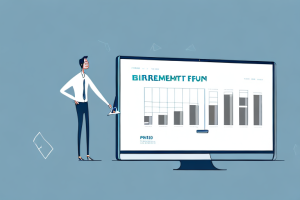Retirement is a significant milestone in life that requires careful financial planning. One of the key concerns for retirees is determining how long their savings will last. If you have a retirement savings of $400,000, it is essential to understand the various factors that can impact the longevity of your funds.
Understanding the importance of retirement savings
Retirement savings play a crucial role in ensuring financial stability and security during your golden years. It is vital to save consistently and start early to allow your funds to grow over time. The more you save, the better prepared you will be to cover your expenses and maintain your desired lifestyle during retirement.
Calculating your retirement needs
When estimating how long your $400,000 will last, it is essential to consider your retirement needs. Begin by analyzing your current expenses and anticipate potential changes in your lifestyle during retirement. Account for regular living costs, such as housing, healthcare, transportation, food, and utilities. Additionally, consider any discretionary expenses, such as travel or hobbies, that you would like to maintain.
After determining your estimated annual expenses, factor in your expected lifespan. While no one can predict precisely how long they will live, reviewing life expectancy data for your demographic can provide a basis for planning. This will give you a rough estimate of the number of years you need to support yourself financially.
With this information, you can divide your retirement savings by the number of years to estimate the amount you can withdraw annually without running out of funds.
The impact of inflation on your retirement savings
It is essential to account for the impact of inflation when evaluating how long your $400,000 will last. Over time, the cost of living tends to rise, eroding the purchasing power of your savings. To counteract the negative effects of inflation, consider investing a portion of your retirement funds in assets that historically outperform inflation, such as stocks or real estate.
By preserving the value of your savings, you can ensure that your retirement funds continue to provide for your needs and maintain your desired standard of living throughout your retirement years.
Assessing your current financial situation for retirement planning
Prior to retirement, it is essential to assess your current financial situation and make necessary adjustments to achieve your retirement goals. Evaluate your overall debt, including mortgages, loans, and credit card balances. Paying off high-interest debts can free up additional funds for retirement savings.
Furthermore, review your investment portfolio to ensure it aligns with your risk tolerance and retirement objectives. Diversifying your investments across various asset classes can help mitigate risk and increase the potential for long-term growth.
Consider consulting with a financial advisor who specializes in retirement planning. They can provide professional guidance and help you navigate the complex financial landscape, ensuring you are on track to achieve your retirement goals.
Exploring different retirement withdrawal strategies
When it comes to withdrawing funds during retirement, various strategies can help prolong the lifespan of your $400,000. One commonly used method is the 4% rule, which suggests withdrawing 4% of your initial retirement savings in the first year of retirement, then adjusting the withdrawal amount annually to account for inflation.
Another strategy is to withdraw only the income generated by your investments, such as dividends or interest, without tapping into the principal. This approach can help ensure that your savings last longer by preserving the capital.
It is crucial to evaluate these strategies alongside your specific financial circumstances and goals. Consulting with a financial professional can provide personalized insights and help you choose the most suitable withdrawal strategy for your retirement plan.
Factoring in Social Security benefits in retirement planning
Social Security benefits are an integral part of retirement income for many individuals. To determine how long your $400,000 will last, it is essential to consider your expected Social Security benefits.
Review your projected benefits statement from the Social Security Administration, which outlines the estimated monthly benefits you will receive based on your earnings history. These benefits can supplement your retirement savings and potentially extend the lifespan of your $400,000.
Understanding when to start claiming Social Security is critical. Delaying benefits beyond your full retirement age can increase the monthly amount you receive. However, even if you claim benefits early, it is essential to evaluate the impact on your overall financial plan.
Considering healthcare costs in retirement budgeting
One aspect of retirement that can significantly impact the longevity of your savings is healthcare costs. As you age, medical expenses tend to increase. It is essential to budget for healthcare costs and consider the potential need for long-term care or insurance coverage.
Research Medicare and supplemental insurance options to gain a better understanding of the available coverage and associated costs. Incorporating these expenses into your retirement budget will provide a more accurate estimation of how long your $400,000 will last.
Additionally, maintaining a healthy lifestyle and prioritizing preventative care can help minimize healthcare expenses in the long run, ultimately stretching your retirement savings further.
Making smart investment decisions to stretch your retirement savings
A carefully crafted investment strategy can significantly impact the longevity of your $400,000 in retirement. Consider investing in a diversified portfolio that balances risk and potential reward.
While there is always a level of risk associated with investing, diversification can help mitigate volatility. Allocate your retirement funds across a mix of asset classes, such as stocks, bonds, and cash equivalents, to potentially maximize returns while minimizing overall risk.
Regularly review and rebalance your investment portfolio to ensure it aligns with your risk tolerance and changing market conditions. Seeking professional advice or utilizing online investment tools can help you make informed decisions and optimize your investments for long-term growth.
Evaluating the risks and rewards of various investment options
When assessing investment options, it is crucial to evaluate the risks and potential rewards associated with each. While higher-risk investments may offer the potential for greater returns, they also come with increased volatility and the potential for losses.
Lower-risk investments, such as government bonds or certificates of deposit (CDs), provide more stability but often offer lower returns. It is essential to strike the right balance between risk and reward based on your individual circumstances and risk tolerance.
Consider diversifying your investments across various sectors and asset classes to spread the risk while potentially benefiting from different market conditions. This diversification can help protect your $400,000 from significant losses and increase the likelihood of its longevity.
Creating a diversified portfolio for long-term financial security
Achieving long-term financial security during retirement requires careful portfolio construction. A diverse investment portfolio can help manage risk and provide stable income over time.
Within your portfolio, consider combining different types of assets, including stocks, bonds, real estate, and alternative investments. Each asset class behaves differently under various market conditions, reducing the potential impact of any single investment’s performance on your overall savings.
Periodically review your portfolio’s performance and make adjustments as needed to ensure it continues to align with your goals and risk tolerance. A well-diversified portfolio can help safeguard your $400,000 against market fluctuations and preserve its longevity.
Maximizing tax advantages for your retirement savings
Efficiently managing your retirement savings from a tax perspective can help stretch your $400,000 further. Take advantage of tax-advantaged retirement accounts, such as 401(k)s or individual retirement accounts (IRAs), to maximize your contributions and potentially reduce your taxable income.
Contributions to traditional 401(k)s and IRAs are typically tax-deductible, allowing you to defer taxes until you withdraw the funds during retirement. In contrast, Roth 401(k)s and IRAs offer tax-free withdrawals in retirement, although contributions are made with after-tax dollars.
Consult with a tax advisor to explore strategies for optimizing your tax situation during retirement. By minimizing your tax liability, you will have more funds available to cover your expenses and extend the lifespan of your retirement savings.
Adjusting your budget and lifestyle to make your savings last longer
As you transition into retirement, adapting your budget and lifestyle becomes key to making your $400,000 last longer. Review your expenses regularly and identify areas where you can potentially cut back without sacrificing your quality of life.
Consider downsizing to a smaller home, reducing discretionary spending, or exploring cost-saving measures in areas such as transportation and entertainment. Prioritizing needs over wants and finding ways to live frugally can help stretch your retirement savings and ensure they are available for as long as possible.
Seeking professional guidance for effective retirement planning
Retirement planning is a complex process that requires careful consideration of numerous factors. Seeking professional guidance from a financial advisor can provide invaluable insights and help you navigate the intricacies of retirement.
A knowledgeable financial advisor can evaluate your specific situation, goals, and risk tolerance, and develop a customized retirement plan tailored to your needs. They can help you establish realistic expectations, identify potential blind spots, and recommend strategies to maximize the longevity of your $400,000 in retirement.
By collaborating with a financial professional, you can gain peace of mind, knowing that you are on the right path toward a secure and well-planned retirement.
Exploring alternative sources of income during retirement
In addition to your retirement savings, there may be alternative sources of income that can help supplement your $400,000. Explore opportunities to generate income through part-time work, freelancing, consulting, or turning a hobby into a profitable venture.
Consider your skills and passions and identify ways to monetize them during retirement. Not only can additional income prolong the lifespan of your savings, but it can also provide a sense of purpose and fulfillment during this stage of life.
Understanding the impact of life expectancy on retirement finances
Life expectancy is a critical factor to consider when assessing how long your $400,000 will last. While it is impossible to predict the exact number of years you will live, understanding life expectancy data can provide a meaningful estimate.
Consider factors such as your current health, family medical history, and lifestyle habits. While this cannot guarantee the length of your retirement, it can help inform your financial planning decisions and ensure that your $400,000 is managed accordingly.
Managing unexpected expenses and emergencies in retirement
Despite careful planning, unexpected expenses and emergencies can arise during retirement. It is essential to have a contingency plan in place to handle these situations without significantly depleting your savings.
Set aside an emergency fund that can cover three to six months’ worth of living expenses. This fund should be easily accessible, such as a high-yield savings account, and separate from your retirement savings to provide a safety net in case of unexpected challenges.
Long-term care considerations and their financial implications
Long-term care is an area of retirement planning that often goes overlooked but can have a significant impact on your $400,000. Assess the potential need for long-term care insurance or alternative strategies to cover the costs associated with extended healthcare or assisted living facilities.
Long-term care insurance can provide financial protection and help preserve your savings by covering expenses that traditional healthcare insurance may not include. Research different policies and consult with an insurance professional to determine the most suitable coverage for your needs.
Planning for legacy and estate distribution in retirement
Preparing for legacy and estate distribution is an important aspect of retirement planning. Review your existing estate plans, including wills, trusts, and beneficiary designations, to ensure they align with your current wishes and financial situation.
Consult with an estate planning attorney to make any necessary updates or revisions. By strategizing your estate distribution, you can ensure that your $400,000 is effectively managed and passed on to your beneficiaries according to your intentions.
Strategies to supplement your income during periods of economic downturn
During periods of economic downturn, it is crucial to have strategies in place to navigate potential financial challenges. Downturns can impact investment returns and employment opportunities, potentially affecting the longevity of your retirement savings.
Consider shoring up your emergency fund during periods of economic stability to provide a financial cushion during downturns. Additionally, review your investment portfolio for any necessary adjustments to safeguard against volatility.
Being proactive and adaptable can help you weather economic downturns and ensure that your $400,000 remains intact for the duration of your retirement.
In summary, determining how long your $400,000 will last in retirement requires a comprehensive analysis of various factors, including your retirement needs, inflation, expenses, investment strategy, tax considerations, and unexpected events. By carefully planning and making informed decisions, you can maximize the longevity of your retirement savings and enjoy a financially secure future. Remember, seeking professional guidance can provide valuable insights and help you navigate the complexities of retirement planning.



